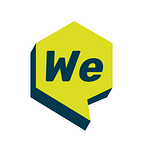‘Great Bubble Barrier’ — Pledge for Cleanliness By Large Corporates
Technology paves the way for sustainably tackling plastic pollution in rivers.
The article was originally published on WeNaturalists, as a part of the curated section by the editorial team. For similar stories, head to our Explore section.
As you read this, nearly 2 million tons of industrial, sewage and agricultural waste is discharged into the world’s water sources, thereby putting 3 billion people’s lives at stake. Do the weak corporate social responsibility strategies of the companies add to this wastewater burden?
Did you know that an unfathomable amount of plastic enters our precious oceans — estimated to be about 150 million tonnes on an annual basis? And the greatest contributors remain to be the rivers, which get polluted by dumping of waste from inland sources.
Scientists, entrepreneurs, inventors worldwide are trying to devise out-of-the-box measures to solve this plastic problem. From dissolving plastics through CSR initiatives to surveillance schemes — herculean ventures by countries are underway to prevent the next Great Pacific Garbage Patch.
Geocycle Bubble Barrier — Transforming the River Narrative
Countries across the globe are coming up with novel solutions to combat the plastic problem. In Asia, for instance, Holcim India has collaborated with ACC and Ambuja to consciously remove around “2,400 tonnes of plastic waste from Agra’s Mantola canal before they enter into Yamuna River.” It is deploying a non-invasive Bubble Barrier technology through Geocycle — the in-house waste management system of these two respective cement companies. This Bubble Barrier technology in India has prevented the leakage of 500 tonnes of plastic waste ever since its inception in April 2021.
Why Is This Conscious Collaboration for Sustainability the Need of the Hour?
Due to improper global waste management, nearly 70 percent of the wastewater that emanates from industrial and household sources goes untreated, thereby implying that 40 million liters of wastewater find its way into the Indian water bodies. Consequently, sewage pollution and untreated wastewater have a manifold impact.
The absence of proper infrastructure and sewage control in the irrigation system also affects the arable land. The polluted water (containing bacteria, infectious diseases) does not favor the enhancement of agricultural practices growing crops. Moreover, according to the WHO and UNICEF’s joint monitoring program, 38 million Indians are dying every year due to multiple waterborne diseases like cholera, typhoid, etc., as they lack access to clean water sources.
Apart from food security and diseases, polluted Indian water bodies are a cause of one-third decrease in India’s GDP. Therefore, this water pollution is not only incurring an annual $80 billion loss in revenues but also bears the brunt of additional health costs to the tune of $9 billion per year.
Taking the above economic dilemma into consideration, resorting to innovative technology is not just the only plausible solution for combating this water problem, it’s also the sensible one. Holcim India’s initiative is the harbinger of hope amidst a sea of crises.
Let Us Dive Deeper Into the Bubble Curtain Technology in India That Is Instrumental in Tackling River Pollution
The Geocycle Bubble Barrier is generated through compressed air passing through tubes that are placed at the bottom of a river or canal. Also, the compressor that connects these tubes is powered by solar energy. Moreover, dissolved oxygen levels in the wastewater increased due to the aeration, thereby improving the water quality.
Is this concept relatively new? Yes, a Dutch start-up, the regional water board and the Amsterdam Municipality jointly developed the Great Bubble Barrier on the Westerdok canal in 2019 to intercept the plastics from reaching the North Sea. The practicality of this concept was first tested in Berlin with a 180 meters long Bubble Barrier in the river IJssel. Did you know that the mission was successful with 86 percent efficiency in cleaning the plastic pollution? As a result, the first operational barrier was set up in Amsterdam — running 24 hours a day and collecting 42,000 kg of plastics annually from the Dutch waterways.
Inspired by the highly successful venture of the Great Bubble Barrier, Geocycle resorted to developing their own green and clean Bubble Barrier. The river cleaning technology involved in the barrier is non-invasive — which implies, it does not disrupt the ecosystem. A Geocycle Bubble Curtain is created by “a specially designed air tube which is placed diagonally on the bed of the canal or river” — through which fish and ships can pass but not plastic.
Now, this Bubble Barrier smartly applies a combination of natural currents and the abovementioned ‘bubble screen’ for channelizing the plastic waste towards the banks of the canals and rivers, from where they are collected for safe treatment. Contrary to the conventional river clean-up projects, which rely on landfilling or incineration — this co-processing infrastructure ensures eco-friendly final waste treatment. From here, the recyclable plastics are shaped into usable products whereas the non-recyclable counterparts are driven to “Geocycle’s facility for pre-processing followed by co-processing in ACC or Ambuja cement kilns.”
Formulating a Sustainable Path — Change the Story
Nearly 11 million metric tons of plastic enter the oceans every year, making it one of the severe threats to the existence of mankind. If this trend continues unabated there will be more plastic than fish in the oceans by 2050. Therefore, the only way to tackle the problem efficiently is through these novel technological innovations — as it helps you to prepare and prevent the impact, instead of repairing and repenting over the damage. The solution also lies in reducing the production of plastic. Recycling and reusing plastics would not only enhance environmental sustainability but also save up on costs.
Sources:
